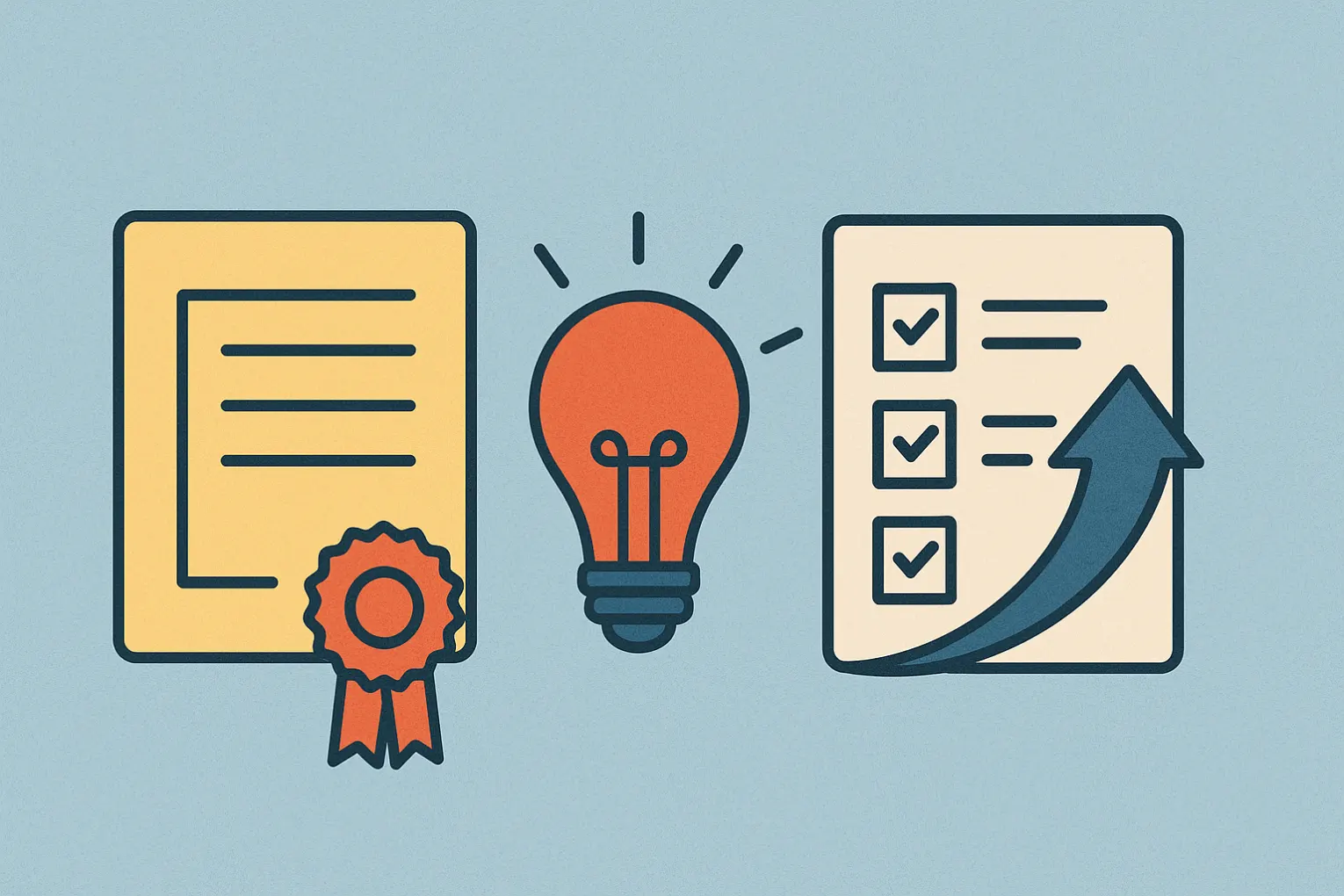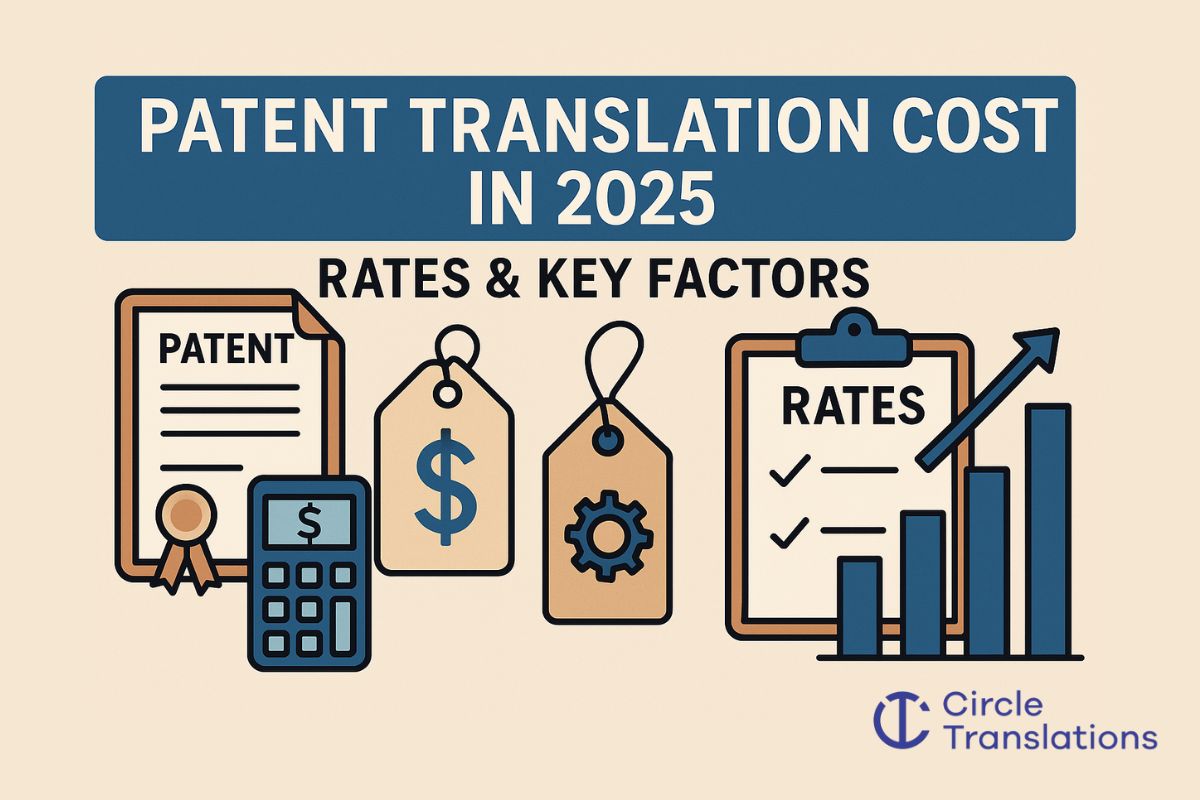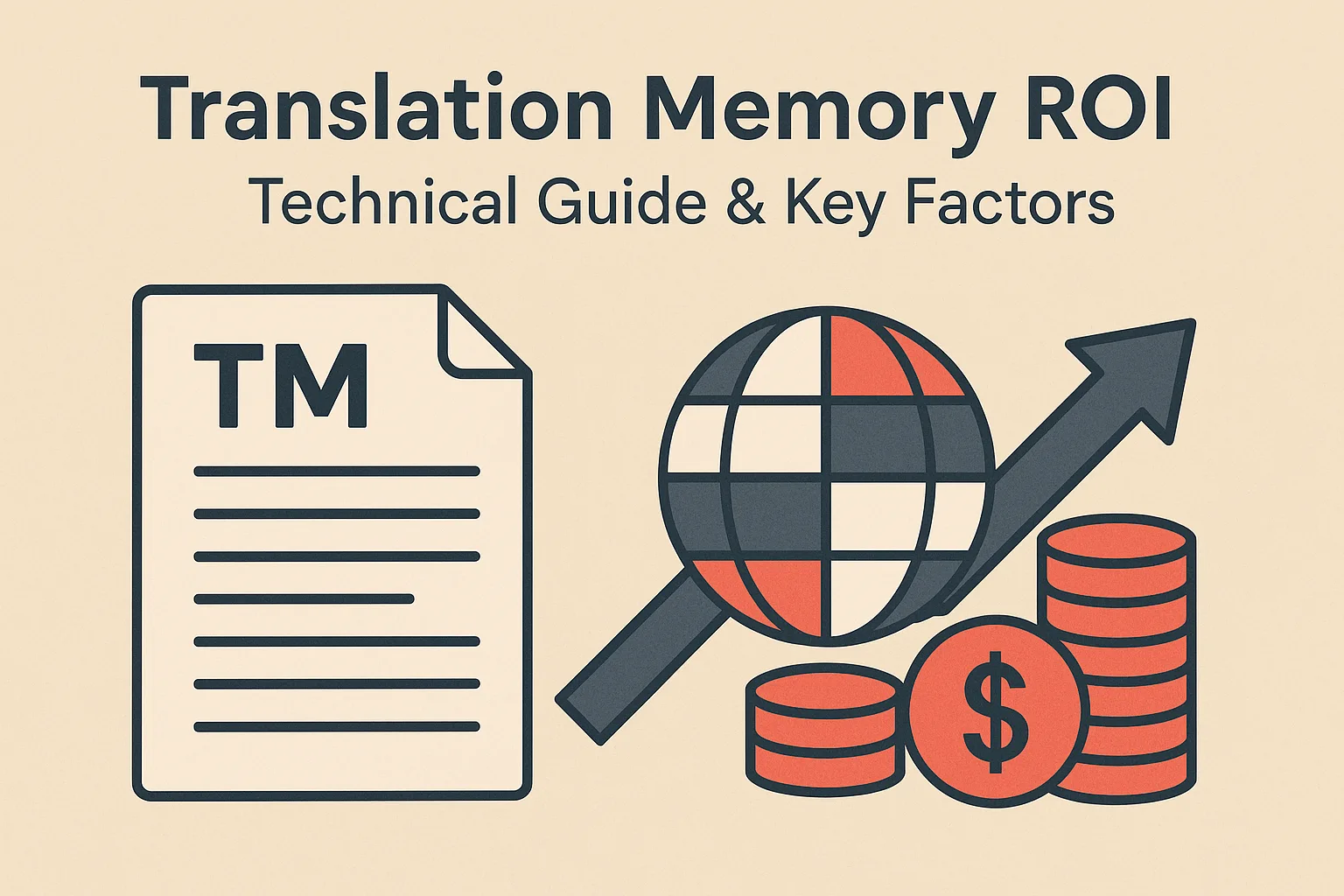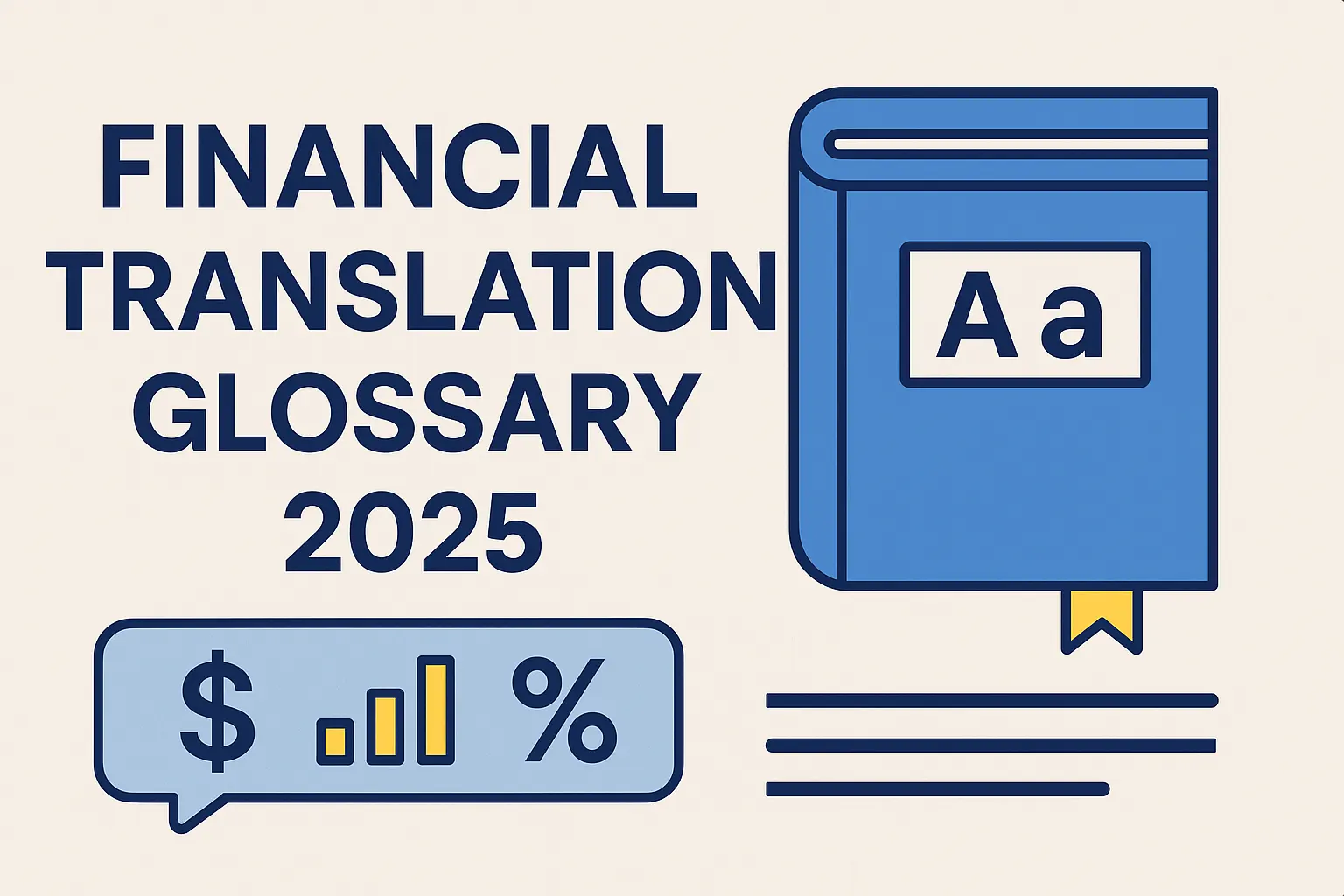When patents are filed across borders, even a single mistranslated claim can jeopardize enforceability, trigger litigation, or delay product launches. That’s why buyers, IP attorneys, corporate legal teams, and R&D leaders demand certified patent translators with proven expertise.
But here’s the challenge: the phrase “certified patent translator” doesn’t mean the same thing in every jurisdiction. Some countries only recognize government-licensed or sworn translators. At the same time, others (like the USPTO) require a certified translation, a signed statement of accuracy, rather than a translator with a government-issued credential.
This guide explains Certified Patent Translator Qualifications, how the qualifications work, and what procurement teams should look for in RFPs.
We also outline Circle Translations’ vetting process to help you understand what proof of competence and deliverables you should expect.
What is a “Certified Patent Translator”?
In global practice, the term has two overlapping yet distinct meanings. And for buyers and legal teams, understanding the difference is critical to ensuring compliance and avoiding costly delays.
Here’s what you should know:
- ISO/credentialed linguist:
A translator who meets ISO 17100 competency pathways or holds recognized third-party credentials (e.g., ATA certification).
These qualifications demonstrate subject-matter expertise and adherence to recognized industry benchmarks.
- Issuer of certified translations:
A professional who can attach a certificate of accuracy (a signed statement verifying that the translation is complete and faithful) to patent translations submitted to patent offices.
Patent offices, such as the USPTO and EPO, typically require the translation itself to be certified, not necessarily performed by a government-licensed translator.
Thus, you should request both Translator qualifications (ISO 17100) and a Certified translation statement for official submissions.
ISO 17100: What Minimum Translator Qualifications Apply?
ISO 17100 is the international standard for translation services that sets requirements for high-quality translation services.
This requires translators to demonstrate competencies in linguistic, textual, research, cultural, and technical skills.
ISO 17100 is now widely accepted as the baseline for certified translator qualifications in technical and legal domains, including patents.
To comply with the standard, translators may qualify in several ways:
- A recognized translation degree from an accredited institution.
- Any degree, but at least two years of documented professional translation work.
- A broader academic background, supported by at least five years of proven translation practice.
- For linguists who enter through professional practice, a minimum of five years of verified translation work.
Do Patent Offices Require “Certified Translators” or “Certified Translations”?
The short answer is – that depends. Let’s dig deeper:
- USPTO (United States Patent and Trademark Office):
When translations of priority documents are needed, they must be based on the certified copy of the original. It also needs to include a certificate of accuracy.
A government-licensed translator is not required.
- EPO (European Patent Office):
Under the London Agreement, some post-grant translations are waived.
However, national offices in countries such as Italy, and Spain may still require translations, sometimes with sworn translators also being a requirement.
Always check whether the requirement is for a “sworn translator” or simply a “certificate of accuracy”.
Specialized Competence: What Makes a Patent Translator Different?
Patent translation requires a unique blend of legal, linguistic, and domain-specific expertise. A mistake in terminology or drafting can have real legal and commercial consequences.
Here’s a detailed list of what sets patent translators apart from the usual crowd:
- Claim drafting language:
Precision in handling terms like “comprising,” “consisting of,” or “consisting essentially of”, each of which has different implications for the scope of protection.
- Classification codes:
Familiarity with IPC and CPC codes to ensure consistency with patent classification systems.
- Sequence listings:
Familiarity with the WIPO ST.26 XML standard, which governs the formatting of biotech sequence listings.
- Free-text qualifiers:
Sensitivity to nuanced terms which can affect the enforceability of claims.
- Terminology resources:
Competence in using specialized databases such as WIPO Pearl and EPO terminology banks for authoritative references.
A qualified patent translator must combine linguistic, legal, and domain expertise in engineering, biotech, chemistry, or IT. So make sure your translators check all the boxes.
Step-by-Step: How We Qualify and Assign a Certified Patent Translator
For high-stakes patent filings, hiring a translator is about ensuring compliance, legal defensibility, and subject-matter accuracy.
At Circle Translations, we’ve built a six-step qualification and assignment process that aligns with ISO 17100 standards and the expectations of patent offices worldwide. Each step is designed to reduce risk and provide procurement teams with verifiable proof of translator qualifications.
Here’s the step-by-step process:
1. CV & Degree Verification
We begin by verifying a translator’s academic background and language credentials. For patents, this often includes:
- A degree in translation or linguistics.
- A technical degree (chemistry, biotech, engineering, IT) for domain-specific patents.
- Proof of continuous professional development (CPD).
Patent translation requires not just language fluency, but a deep understanding of the subject matter. For example, a translator with a background in electrical engineering is better positioned to handle semiconductor patent claims.
2. Subject-Matter Test
Every patent translator candidate completes a domain-specific test translation. This is typically a short extract of a real-world patent, covering:
- Claim language
- Technical descriptions.
- IPC/CPC terminology.
The test is reviewed by a senior linguist or subject-matter expert (SME) to confirm precision, conciseness, and understanding of patent drafting style.
This ensures the translator can handle claim scope, where a single mistranslation could invalidate enforceability.
3. ISO 17100 Pathway Check
Next, we confirm that the translator meets at least one of the ISO 17100 translator qualification routes:
Documentation of this pathway is stored in our qualification records, which procurement teams can review upon request.
ISO 17100 provides a globally recognized baseline for translator job requirements, ensuring consistent quality and accountability.
4. Pilot Test with LQA (MQM/DQF Framework)
Before assigning a live patent project, we run a pilot translation. This is scored against the MQM/DQF error typology, measuring:
- Accuracy: correct terminology, no omissions
- Fluency: grammar, readability
- Terminology: use of approved glossary
- Locale/style: compliance with target jurisdiction norms
A minimum quality score must be achieved before the translator is approved for patent work. This demonstrates theoretical knowledge and measurable quality performance in practice.
5. Security Clearance & NDA
Given that patent applications often involve unpublished inventions, confidentiality is critical. Our translators must:
- Sign Non-Disclosure Agreements (NDAs).
- Access documents only via secure client portals.
- Follow role-based access controls (least privilege model).
- Comply with GDPR and data minimization rules.
Patent leaks can result in financial and legal exposure. Security compliance is as important as linguistic accuracy.
6. Live Monitored Project with Second-Linguist Review
Finally, the translator is assigned a monitored live project.
Key elements include:
- Second-linguist review (mandatory under ISO 17100).
- Continuous monitoring by a project manager.
- Logged corrections in a change log for accountability.
This ensures that every deliverable—whether a claims section or full patent application—has been independently checked for accuracy, consistency, and formatting integrity.
Security & Confidentiality: What Controls Should Procurement Require?
When dealing with patent translations, you are handling unpublished inventions, trade secrets, and intellectual property that may not even be filed yet.
Any leak or unauthorized disclosure could cost millions in lost market exclusivity or cause your application to be challenged.
That’s why security and confidentiality are core translator qualifications that procurement must demand.
Here are the controls that should be in place before a patent translator touches a file:
1. NDAs Signed Before Any Work Starts
Every linguist, reviser, project manager, and DTP engineer should sign a Non-Disclosure Agreement (NDA) before accessing sensitive content.
This creates a legal barrier against disclosure and ensures accountability in case of a breach. Reputable providers maintain standard NDA templates aligned with patent office confidentiality rules.
2. Secure Portals for File Transfer
Emails and cloud drives are not enough for patent material. Buyers should demand a dedicated, secure client portal for all uploads, downloads, and project tracking. These portals typically feature access logging, encryption, and two-factor authentication (2FA) to ensure that only authorized personnel can interact with documents.
3. Encryption at Rest and in Transit
Patent drafts, claims, and supporting documentation must be encrypted during transfer (TLS/SSL) and stored in encrypted form (AES-256 or equivalent). This prevents interception or theft, whether files are moving across networks or sitting on a server.
4. Role-Based Access (Least-Privilege Model)
Access should be given strictly on a need-to-know basis. For example, if only the translator and reviser require the files, DTP staff should not have access to the full patent content unless necessary.
This role-based access control (RBAC) minimizes exposure and prevents insider risk.
5. Audit Trails for Every Action
A professional translation provider will maintain audit logs of every action, such as:
- Who accessed the file.
- What changes were made.
- When edits occurred.
This traceability not only helps with accountability but also provides documentation if legal questions, such as disputes over accuracy or confidentiality, arise later.
6. GDPR Alignment and Data Processing Transparency
Since patent translations often involve cross-border collaboration, GDPR and other data-protection regulations, such as CCPA in California, apply. Vendors must clearly state:
- How long the files are retained.
- Where the data is hosted.
- How data deletion is handled after project closure.
Transparent data processing agreements (DPAs) should be available to procurement teams on request.
7. No Public Machine Translation Use
Uncontrolled use of public machine translation (MT) engines, e.g., Google Translate, DeepL public, is a critical risk.
These platforms may store text in ways that expose sensitive information. Acceptable practice is either human-only translation or, if MT is permitted, it must be through a private, on-premise, or API-controlled engine with no external data retention.
Why This Matters for Procurement
These are not just “nice to have” features. They are translator job requirements in industries where confidentiality is mission-critical, such as finance, legal, blockchain, and patents are no different.
Procurement leaders should request evidence of these controls, e.g., NDA templates, encryption policies, and portal screenshots, before onboarding a translation vendor.
Do NARIC/ENIC Qualifications Matter for Patent Translators?
The UK’s ENIC (formerly NARIC) does not certify translators. But it plays a valuable role in verifying foreign academic degrees. ENIC validates whether a linguist’s qualifications are equivalent to UK standards, which can help procurement teams confirm that a translator’s credentials are authentic.
A good example could be, linguists with a chemistry degree from a non-EU country needing ENIC validation for ISO 17100 compliance.
Deliverables & Proof of Qualification
When procuring certified patent translations, the translation itself is just the beginning. To ensure compliance, legal defensibility, and auditability, you should expect additional deliverables that verify quality and expertise.
Here’s what to look for:
- Certificate of Accuracy
- Translator/reviewer qualification summary
- LQA scorecard (MQM/DQF)
- Terminology sheet
- Change log of edits between translator and reviewer
In some countries, you may also need a sworn translation for litigation or court enforcement. Clarifying these requirements early in the procurement process can save time, and reduce risks.
When to Insist on Human-Only vs. MTPE
Patent document demands the precision and nuance that only a human translator can provide. However, a machine-assisted approach can be accepted when doing the non-essential portions, but with safety measures in place.
- Human-only translation required:
Claims, abstracts, legal disclaimers, and any sections where precision directly impacts enforceability or legal interpretation.
- MTPE acceptable:
Background descriptions or prior art references. But, only if reviewed by an SME and a second linguist.
At Circle Translations, we execute this balance flawlessly. Our translators combine domain expertise with rigorous ISO 17100-certified processes, and every MTPE workflow is supervised by SMEs and second linguists, ensuring that even machine-assisted sections meet the highest standards. Resulting in patent translations that are not only accurate and legally defensible but also delivered consistently on time – every time.
RFP Checklist: Verifying Certified Patent Translator Qualifications
When issuing an RFP for patent translation services, it’s essential to ensure that your providers meet industry-standard qualifications, security requirements, and quality assurance processes.
Including the right criteria upfront helps procurement teams minimize risk and select translators who are fully compliant and technically capable.
The checklist should include:
- ISO 17100-compliant qualification path.
- ATA (or equivalent) third-party credentials.
- Signed certificate of accuracy template.
- Two-linguist revision policy.
- LQA model (MQM/DQF).
- NDA + security posture summary.
- References in your technical domain.
- SLA commitments (on-time delivery rates).
Conclusion: Securing Qualified Patent Translators
For procurement teams, the phrase Certified Patent Translator Qualifications must translate into verifiable proof.
The ISO 17100 pathway, subject-matter expertise, certificate of accuracy, and secure handling of confidential filings are non-negotiable requirements when it comes to documents this sensitive.
At Circle Translations, we combine 120+ languages, native patent linguists, ISO-aligned workflows, and GDPR-ready security. Our certified translators not only meet international qualifications but also deliver the compliance artifacts (certificates, LQA scorecards, terminology sheets) that procurement requires.
With the right partner, your international patents are protected, accurately, securely, and on time – every time.
Frequently Asked Questions
Is a “certified translator” legally required for patent filings?
Not always. Many offices require a certified translation (translator’s signed accuracy statement), not a government-licensed translator. The USPTO requires a translation of the certified copy with an accuracy statement.
What are the ISO 17100 qualification paths for translators?
Four documented routes:
- translation degree
- any degree + 2 years’ experience
- non-translation degree + 5 years’ experience
- or 5+ years of verified professional work
In every case, mandatory second-linguist revision applies for security measures.
Which credentials signal advanced competence (beyond ISO)?
ATA certification (U.S.) or equivalent exams are rigorous, third-party validations with a low pass rate. They’re strong signals of competence.
Do we ever need “sworn” translations for patents?
Sometimes, especially in litigation or specific national offices. While the EPO/UPC reduced some burdens, many countries still require sworn or notarized translations.
What patent-specific knowledge should translators demonstrate?
Mastery of claim drafting conventions, IPC/CPC terminology, WIPO ST.26 sequence-listing rules, and handling of language-dependent qualifiers.
Does NARIC/ENIC certification make someone a certified translator?
No. ENIC validates academic degrees but does not certify translators. It’s useful for verifying degrees as part of ISO 17100 qualification compliance.
















